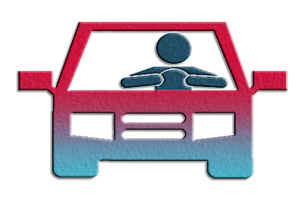Why am i so bad at driving?

Reasons You Might Be Bad at Driving:
Lack of Experience
Description: Inadequate driving practice is a common reason for poor driving skills. Beginners often haven’t spent enough time behind the wheel to develop confidence and muscle memory.
Examples: Struggling with parking, difficulty judging distances, or feeling overwhelmed in heavy traffic.
What to Do: Practice regularly in various conditions. Consider taking additional driving lessons to gain more experience.
Nervousness or Anxiety
Description: Anxiety can significantly impair your driving ability. Nervous drivers might hesitate, make sudden movements, or become easily distracted.
Examples: Gripping the steering wheel tightly, hesitating at intersections, or panicking in busy traffic.
What to Do: Practice relaxation techniques like deep breathing. Gradually expose yourself to more challenging driving scenarios to build confidence.
Poor Vision
Description: Vision problems can make it difficult to see road signs, other vehicles, or pedestrians, which can lead to unsafe driving.
Examples: Struggling to see at night, missing road signs, or having difficulty judging the distance of other vehicles.
What to Do: Get regular eye exams and ensure your prescription glasses or contact lenses are up to date. Consider wearing polarized sunglasses to reduce glare.
Distracted Driving
Description: Distractions – example: mobile phones, eating, or adjusting the radio can divert your attention from the road.
Examples: Texting while driving, fiddling with the GPS, or turning around to talk to passengers.
What to Do: Keep your phone on silent and out of reach while driving. Set up your GPS before you start driving and avoid multitasking.
Poor Understanding of Traffic Laws
Description: Not knowing or misunderstanding traffic laws can lead to mistakes and unsafe driving practices.
Examples: Misinterpreting right-of-way rules, speeding, or failing to yield at intersections.
What to Do: Review the driver’s manual and take online quizzes to refresh your knowledge. Attend a defensive driving course for a comprehensive review.
Lack of Vehicle Familiarity
Description: Being unfamiliar with the controls and handling of your vehicle can affect your driving.
Examples: Not knowing how to use the wipers, lights, or adjusting mirrors improperly.
What to Do: Spend time getting to know your car’s features. Read the owner’s manual and practice using different controls while parked.
Physical Limitations
Description: Physical issues – example: slow reaction times, limited mobility, or chronic pain can hinder driving ability.
Examples: Difficulty turning the wheel, pressing pedals, or quickly responding to road conditions.
What to Do: Consult with a healthcare provider for adaptive devices or therapies that can help. Consider taking breaks during long drives to stretch and rest.
Poor Road Conditions
Description: Driving in adverse weather or on poorly maintained roads can be challenging for any driver.
Examples: Slippery roads during rain or snow, potholes, or poorly marked lanes.
What to Do: Drive more slowly and carefully in bad weather. Ensure your vehicle is equipped with good tires and maintained brakes.
Overconfidence
Description: Being too confident can lead to risky driving behaviors and underestimating potential dangers.
Examples: Speeding, aggressive driving, or ignoring traffic signs.
What to Do: Remain vigilant and always follow traffic laws. Reflect on your driving habits and make necessary adjustments.
What to Do to Improve Your Driving

- Practice Regularly
Increase your driving practice in a variety of conditions.
- Take Professional Lessons
Enroll in additional driving courses or defensive driving classes.
- Stay Calm
Use relaxation techniques to manage anxiety.
- Stay Focused
Eliminate distractions and focus solely on driving.
- Learn the Rules
Refresh your knowledge of traffic laws regularly.
- Get Comfortable with Your Vehicle
Familiarize yourself with all controls and features of your car.
- Address Physical Issues
Seek medical advice for any physical limitations.
- Be Cautious in Adverse Conditions
Adjust your driving according to weather and road conditions.
- Stay Humble
Maintain a cautious and respectful attitude while driving.
Interesting Facts About Driving

First Speeding Ticket: The first speeding ticket was issued in 1902. The driver was going 45 mph!
Longest Traffic Jam: The longest traffic jam in history occurred in Beijing in 2010, stretching over 60 miles and lasting 12 days.
Road Rage: Studies show that drivers with road rage are more likely to have accidents. Staying calm can save lives.
Night Driving: Human vision is much less effective at night, which is why accidents are more common after dark.
Roundabouts: Studies have shown that roundabouts reduce fatal accidents by about 90% compared to traditional intersections.
By understanding these factors and taking proactive steps to address them, you can significantly improve your driving skills and safety on the road.












